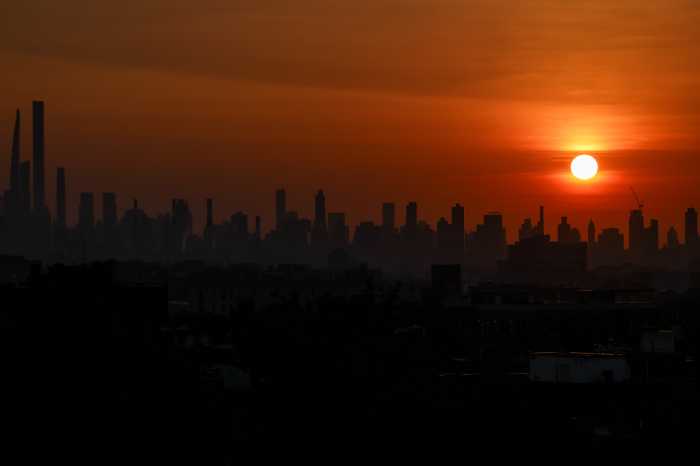Brooklyn bird enthusiasts are raising funds to prevent avian collisions in Jamaica Bay — aiming to install bird-safe film on the windows at a local wildlife refuge, which they hope will inspire others to consider “bird-proofing.”
“One of the things we would love to do is to try to convince people to treat their windows to try to make them bird-safe and collision-safe,” said Dennis Hrehowsik, president of the century-old Brooklyn Bird Club. “We thought a great place to start would be the buildings [in Jamaica Bay and within the National Parks Services system] that both have a lot of bird traffic.”
While the City Council passed regulations in December 2019 requiring new or altered buildings to use glazed or patterned glass to cut down on bird deaths and window strikes, there are no such requirements for existing, untouched structures.
The Brooklyn Bird Club has been working to bird-proof borough buildings for over a year, the club’s president said, and has already raised $10,000, which funded bird-safe film for the Salt Marsh Nature Center in Marine Park that was installed in October, and kick-started its latest endeavor — outfitting the Jamaica Bay Wildlife Refuge Center.
“We were able to get most of the way there, we were able to treat the windows at the Salt Marsh Center,” Hrehowsik said.
The birders are now seeking an additional $5,000 to bird-proof the refuge center in neighboring Queens this April — and have received nearly $1,500 in donations just one day since launching their online fundraiser.
“We could have gotten the part of the Jamaica Bay wildlife center that was most problematic [with the $10,000] but we thought, since we are going to be in there, let’s get the whole thing done,” Hrehowsik said. “Let’s raise a little bit of capital and do it the right way.”
Bird-proofing requires pasting a film over the clear glass window that contains an image or pattern that breaks up the reflection of the environment around it to signal that a bird should change course, Hrehowsik said.
“Basically, a reflecting window looks like sky to a bird so it thinks it can keep going,” he said. “And these patterns sort of break up that clean line that the bird thinks it has in the window so it realizes it has to turn.”
The film can also be visually-appealing, Hrehowsik added, pointing to the work done at the visitor’s center at the Brooklyn Botanic Garden.
“Having seen some of these films, they are quite attractive actually and are really cool,” Hrehowsik said. “It can actually add something aesthetically to your building to take part in one of these projects.”
The windows of the Salt Marsh Nature Center in Marine Park are now outfitted with a dotted pattern, which is one of the more common designs used to prevent bird collisions.
New York City is a major thoroughfare for birds migrating north and south, and clear-glass windows lead to hundreds of thousands of avian deaths per year, the bird club president said.
“What people don’t realize is they think of New York City as this man-made megatropolis, and it is,” Hrehowsik told Brooklyn Paper, “but it has always been a crossroads. Before it was a trading point, it was always the Atlantic Flyway where birds the last 40,000 years since the Pleistocene have flown over on their migration.”
The Jamaica Bay-Rockaway Parks Conservancy, NYC Audubon and American Littoral Society are all partnering with the Brooklyn Bird Club to help bird-proof Jamaica Bay.
For Alex Zablocki, executive director of the Jamaica Bay-Rockaway Parks Conservancy, it’s about bettering the Atlantic Flyway for feathered friends near and far.
“Jamaica Bay is an important urban estuary, supporting migrating birds as they travel along the Atlantic Flyway. Unfortunately, dense urban environments are host to buildings with many windows, and this poses a great threat to these birds as windows reflect the sky and environment around it leading to countless bird strikes annually,” he said. “In response to this threat, we joined the Brooklyn Bird Clubs’ grassroots effort to raise funds to install bird-safe markers on windows in and around Jamaica Bay this year. This application will help prevent bird strikes in some of the most important birding habitats in our city, but we can’t do it alone.”

























